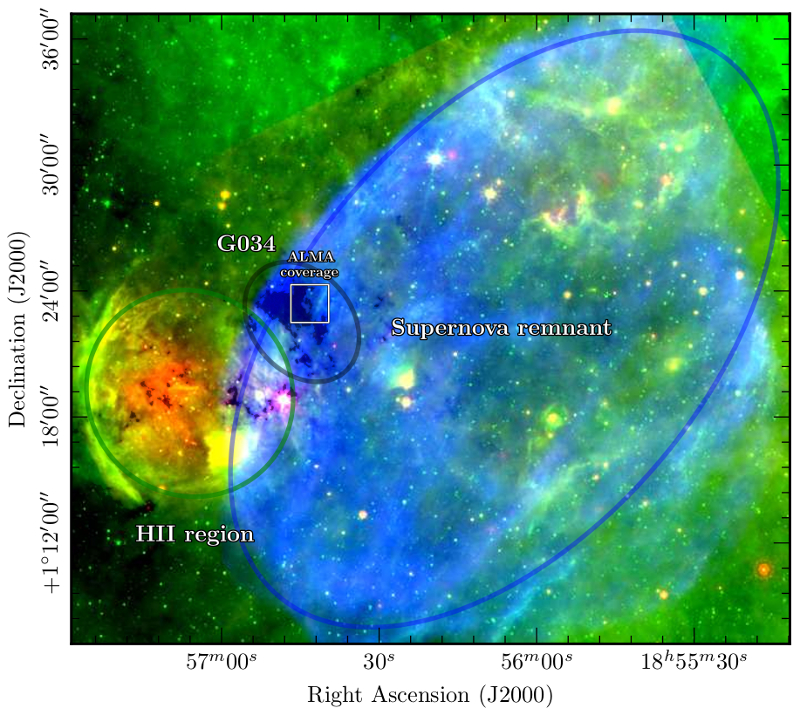| EPoS Contribution |
|
Widespread SiO emission in Infrared Dark Clouds as a probe of cloud-cloud collisions and other shock interactions
Giuliana Cosentino Chalmers, Goteborg, SE | |
| Infrared dark clouds (IRDCs) are cold and dense regions of the sky known to be the birthplace of high-mass stars and stellar clusters. The physical mechanism leading to the formation of IRDCs is still not completely understood and it is thus important to study their molecular gas kinematics and chemical content to search for any signature of their formation process. Simulations have shown that cloud-cloud collisions can efficiently form IRDCs and at the same time trigger high-mass star formation within these clouds. By looking for widespread and narrow Silicon Monoxide (SiO) emission, we tested the cloud-cloud collision scenario toward a sample of 10 IRDCs. By means of single-dish observations, we found that the ten IRDCs show complex dense gas kinematics substructures with correlated widespread (parsec-scale) SiO emission. Among the sample, three IRDCs show evidence of narrow isolated SiO emission, not associated with on-going stellar activity. Using ALMA, we performed follow-up high-angular resolution observations of the SiO emission toward one of these sources, the IRDC G034.77-00.55 and found that the shock tracer is probing the fully spatially resolved CJ-type MHD shock arising from the interaction between the dense molecular gas of the cloud and a molecular gas filament pushed toward the IRDC by the nearby supernova remnant (SNR) W44. Our results suggest that molecular filament-filament (or cloud-cloud) collisions can also be triggered by stellar feedback, inducing shocked molecular gas densities compatible with those required for massive star formation. | |
 | |
| Caption: Three-colour image of G034 showing its position (black circle) between W44 (blue circle) and G034.758- 00.681 (green circle). Red is 24 μm emission (Spitzer MIPSGAL), green is 8 μm emission (Spitzer GLIMPSE), and blue shows a combined JVLA+GBT 21cm continuum map (THOR survey). The white square indicates the ALMA mosaic area and the grey shadow corresponds to Av ≤ 20 mag. | |
| Collaborators: J.C. Tan, Chalmers, SE I. Jimenez-Serra CSIC/INTA, ES S. Viti, UCL, UK P. Caselli, MPE, DE J. D. Henshaw, MPIA, DE A.T. Barnes, AIfA, DE F. Fontani, INAF-OAA, IT B. Wu, NAOJ, JP |
Key publication
Suggested Session: High-Mass Star Formation |

